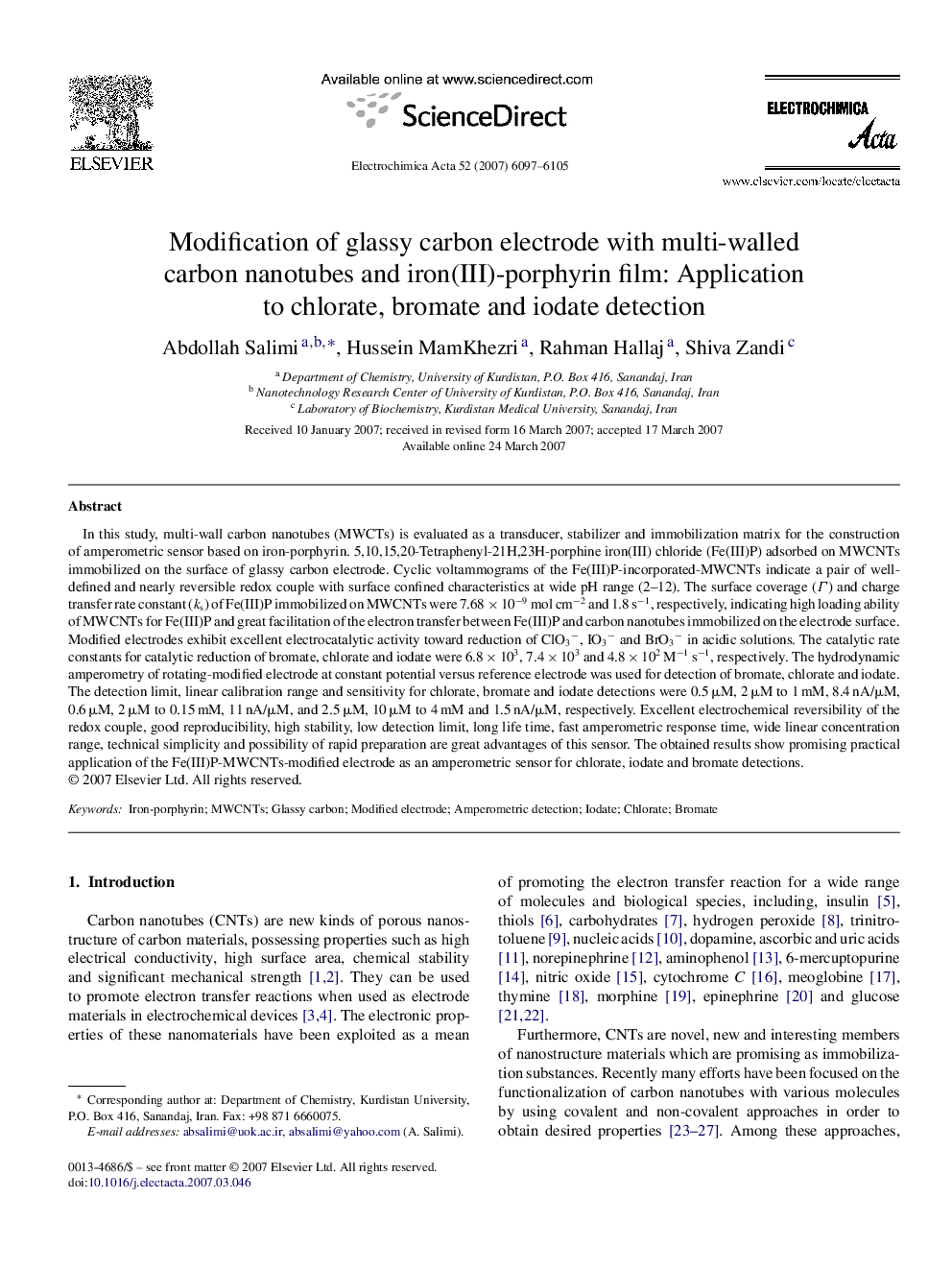| Article ID | Journal | Published Year | Pages | File Type |
|---|---|---|---|---|
| 192969 | Electrochimica Acta | 2007 | 9 Pages |
In this study, multi-wall carbon nanotubes (MWCTs) is evaluated as a transducer, stabilizer and immobilization matrix for the construction of amperometric sensor based on iron-porphyrin. 5,10,15,20-Tetraphenyl-21H,23H-porphine iron(III) chloride (Fe(III)P) adsorbed on MWCNTs immobilized on the surface of glassy carbon electrode. Cyclic voltammograms of the Fe(III)P-incorporated-MWCNTs indicate a pair of well-defined and nearly reversible redox couple with surface confined characteristics at wide pH range (2–12). The surface coverage (Γ) and charge transfer rate constant (ks) of Fe(III)P immobilized on MWCNTs were 7.68 × 10−9 mol cm−2 and 1.8 s−1, respectively, indicating high loading ability of MWCNTs for Fe(III)P and great facilitation of the electron transfer between Fe(III)P and carbon nanotubes immobilized on the electrode surface. Modified electrodes exhibit excellent electrocatalytic activity toward reduction of ClO3−, IO3− and BrO3− in acidic solutions. The catalytic rate constants for catalytic reduction of bromate, chlorate and iodate were 6.8 × 103, 7.4 × 103 and 4.8 × 102 M−1 s−1, respectively. The hydrodynamic amperometry of rotating-modified electrode at constant potential versus reference electrode was used for detection of bromate, chlorate and iodate. The detection limit, linear calibration range and sensitivity for chlorate, bromate and iodate detections were 0.5 μM, 2 μM to 1 mM, 8.4 nA/μM, 0.6 μM, 2 μM to 0.15 mM, 11 nA/μM, and 2.5 μM, 10 μM to 4 mM and 1.5 nA/μM, respectively. Excellent electrochemical reversibility of the redox couple, good reproducibility, high stability, low detection limit, long life time, fast amperometric response time, wide linear concentration range, technical simplicity and possibility of rapid preparation are great advantages of this sensor. The obtained results show promising practical application of the Fe(III)P-MWCNTs-modified electrode as an amperometric sensor for chlorate, iodate and bromate detections.
